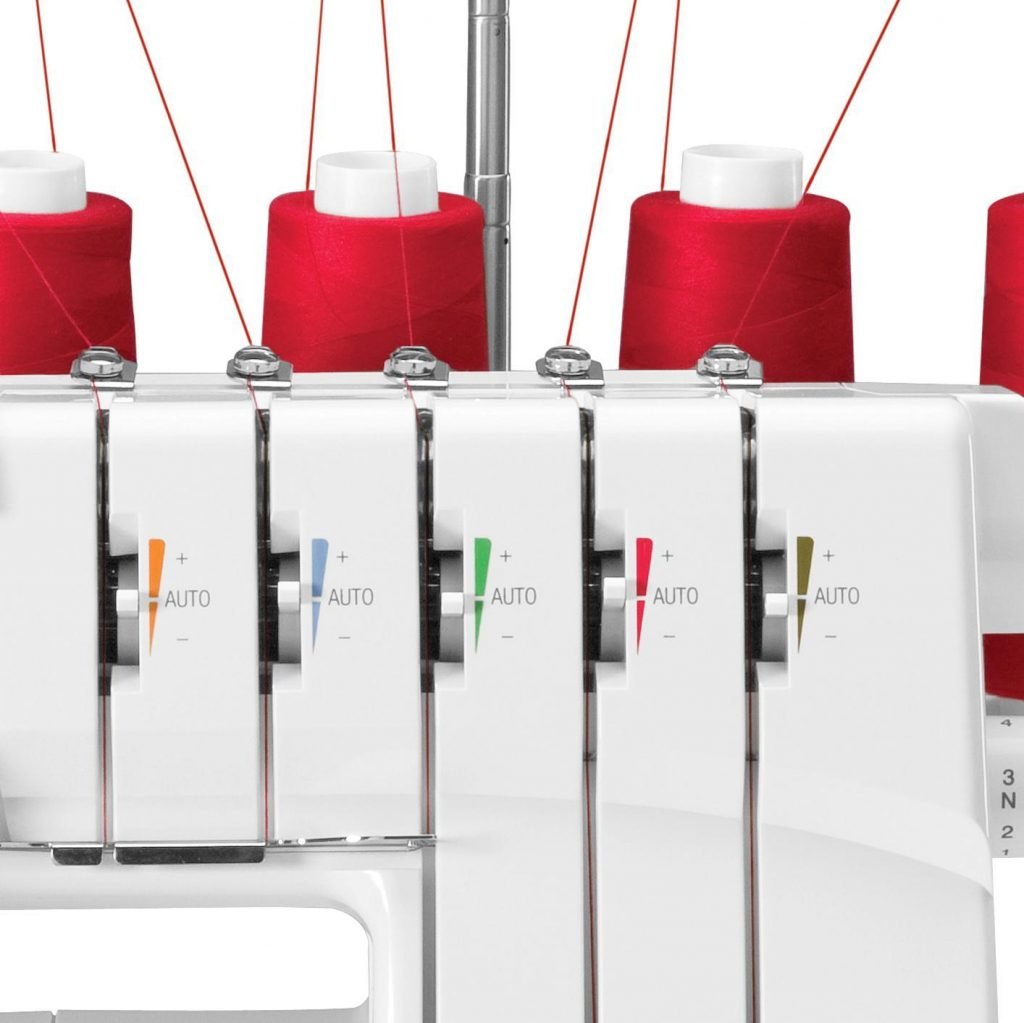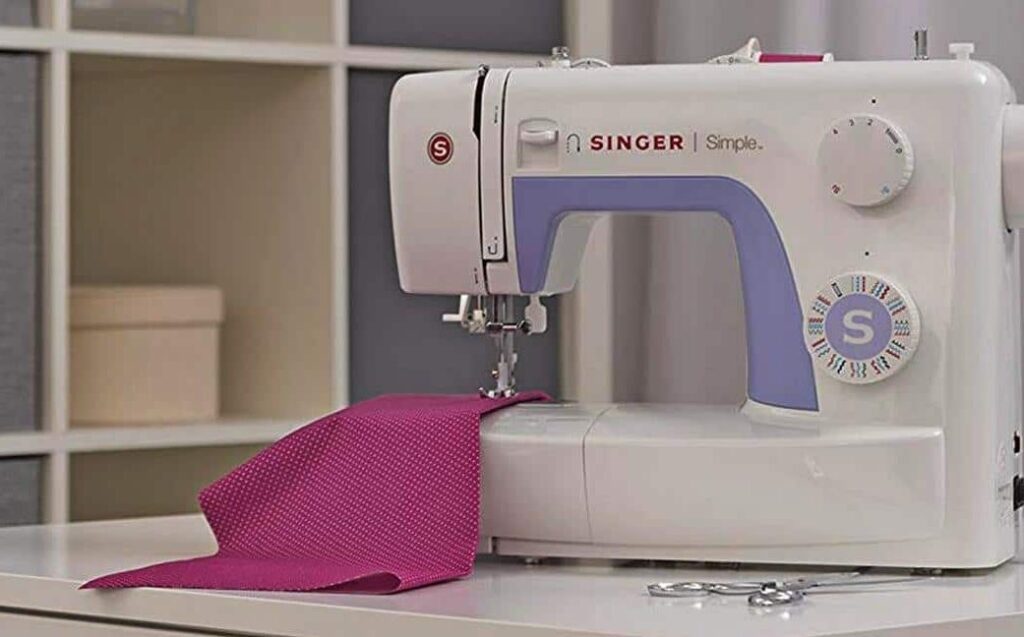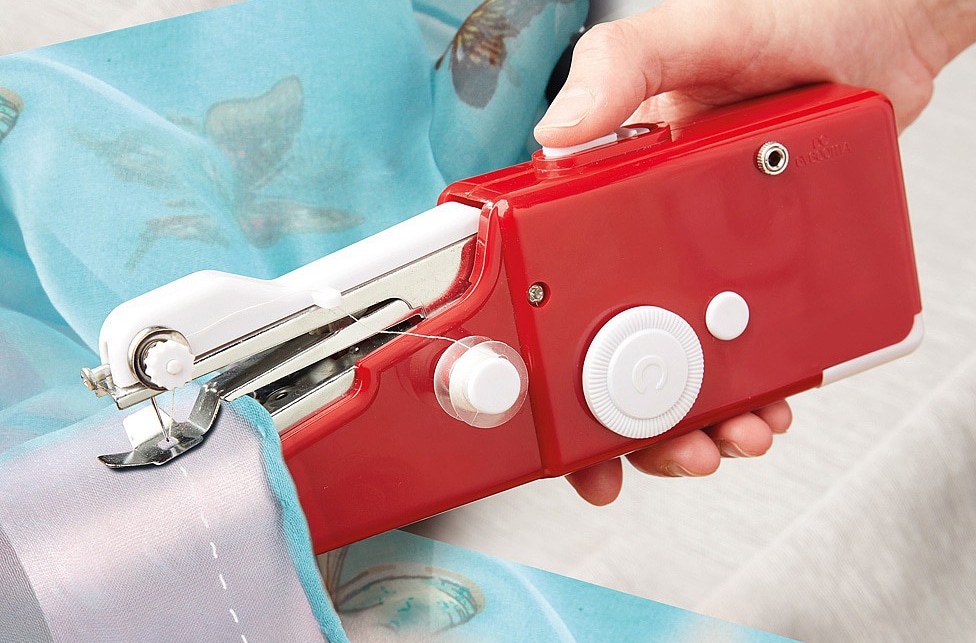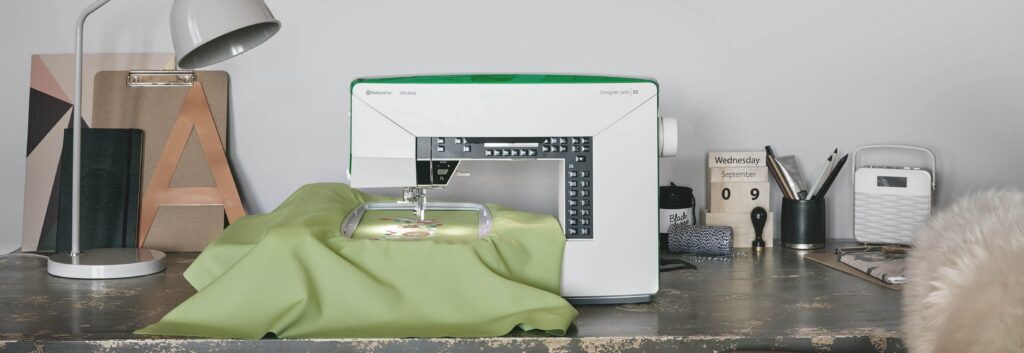You probably have noticed two or three rows of stitching on the hem of T-shirts, stretchy dresses, and other knit clothes. Coverstitch machines create exactly this accurate and durable finishing. These devices were made for hemming stretch materials such as jersey, spandex, lycra, and rayon. If you want to stitch garments like a pro, then you definitely need the best coverstitch machine that can handle your projects.
While choosing one, you should consider some important features, including coverstitch and thread capability that suits your needs best, as well as sewing speed, threading, and warranty terms for the peaсe of mind. In our research, we covered all you need to know about the coverstitch machines to help you make a well-informed decision.
We analyzed hundreds of customer reviews, taking into account both professionals’ and beginners’ experience, and picked out five best coverstitch machines that impressed us with their features. The results of the research are highlighted in the comparison table below. Read on for the thorough description of each product, complete with pros and cons. We continue with a detailed buying guide. To conclude, we announce the top-rated coverstitch machines from our roundup.
Despite the affordable price, the Brother 2340CV offers some features typically found on more expensive coverstitch machines. The model performs a quick looper system for threading. In their reviews, even entry-level sewers admit that threading is easy.
The 2-3-4-thread capability is perfect for multi-purpose tasks. You can make chain or cover stitches, finishing garments from woven, stretch, heavyweight or lightweight fabrics. The machine sews at 1,100 spm that is more than enough for hobbyists. The stitch length is between 2mm to 4mm. The width starts at 2mm and goes up to 4mm. To adjust the length and width you can simply use the dial.
Users mention that there are only three drawbacks to this model. The first is a thread breaking. It usually happens when a sewer uses a cheap thread. The second is that there is no auto-tension release. This rarely causes problems, but for most of the beginners, it is better to own a model with automatic tension. The third is that the machine has no free arm and that limits the variety of your projects. Aside from these cons, the unit stitches fast and accurately, it is mobile and lightweight. The Brother company gives a long-term warranty and offers a great customer service.
It’s not only the high quality of the Singer Professional 5 14T968DC that’s impressive. This durable machine was made for two purposes. The first is overcasting to prevent material from fraying at the edge. And the second is making hems that can stretch. The unit provides a broad selection of stitch options for sewing seams, decorative edges, hems, cover hems, rolled hems and more.
The machine operates at the excellent speed of stitching, 1,300 stitches per minute. This speed allows you to complete your projects quickly and easily.
The easy-to-use features include an automatic tension system. You can simply turn a dial and select the chart to set a tension. The 2-3-4-5 thread capability provides professional finishing every time. Is can sew a seam, finish it, and trim excess allowance. This feature will save you a lot of time. Adjustable cutting length and width give space for creativity. On top of that, the all-purpose serger comes with a bunch of accessories like a serging knife, multi-functional foot, clean pocket, spool caps and others.
Aside from all the advantages, we found that some users complain about the autotension. They say that sometimes during sewing a few layers of bulky fabrics the machine makes ugly stitches. However, more accomplished sewers praise the unit for its excellent work even with thick and heavy materials, so perhaps, the performance of the machine varies depending on the user’s experience.
The device is backed by a 25-year limited warranty. The Singer company has a good reputation as a reliable manufacturer. With the Singer Professional 5 14T968DC, you will add a classy finishing touch to home décor, garments, and other projects of yours.
The Juki MCS-1500 is a fast and feature-rich machine. The unit offers a stitch speed of 1350 stitches per minute. With the model, you’ll sew more productively and create many garments and home décor items. This coverstitch machine offers three needles to create a 3-thread cover stitch and a 4-thread chain stitch. The former is good for stitching side seams and waists. The latter is suitable for simple hems, sleeve cuffs, armholes, and necklines.
The next benefit of this industrial sewing machine is the adjustable pressure foot that allows sewing through thick materials. Due to the simple looper design and the automatic threader, the threading is very easy even for beginners. In the reviews, users rarely say that they have troubles with threading the machine with new spools. The unit has the exterior thread cutter with which you can remove unnecessary pieces of thread.
According to the reviews, topstitching sometimes becomes difficult because of the lack of a larger throat space. Most of the users claim that it takes a steep learning curve to master the top stitches. Yet after a while, they get along with the feature. Despite these little disadvantages, the Juki MCS-1500 stitches well and the result looks just perfect.
The device has a 2-year limited warranty on electronics and 5-year-limited warranty on mechanics. However, this machine is really a workhorse, it can handle big projects and stitch all day long for many years. In the comments, people praise the device for its steady work without a need for repair.
The Janome CoverPro 1000CPX is an advancement to its predecessor, the Janome CoverPro 900CPX. The new model offers the 2-3-4-thread capability instead of the 2-3-thread capability. The CoverPro 1000CPX was made for heavy-duty projects. It performs three types of stitches: triple needle coverstitch, double needle coverstitch, and single chain stitch.
The stitch length varies from 1mm to 6mm. The unit offers a generous bed space that is convenient for large projects. Due to the long free arm, the device is especially helpful when it comes to finishing off cuffs, waistbands, and sleeves. Another praiseworthy feature is the adjustable presser foot that feeds through even very heavy materials. The accomplished sewers appreciate the seam accuracy, and the novices are happy with the user-friendly design.
The Janome brand is worldwide well-known for delivering both value and quality. Therefore, there are only a few downsides, including the average stitch speed. The unit performs at 1000 stitches per minute. According to the reviews, some users think that it is not fast enough. The others are very satisfied and have nothing to complain.
Another weak point is that the machine doesn’t sew well with a cheap thread. In many reviews, the sewers claim that it skips stitches while penetrating several layers of thick fabric. With a high-quality thread, there are no such problems. The quality of stitching is praiseworthy, and that’s why the machine is one of the popular choices for both professionals and beginners.
More features: 15 overlock stitches, four combo stitches and one chain stitch, color-coded thread paths, LED light
The Bernette b48 is a very user-friendly mechanical sewing machine that is also renowned for its high versatility. It’s a machine that offers high arrays of stitching options. It’s also notable for the color-coding of the thread paths. This makes threading very easy to do and also master when compared to its peers in the mechanical line.
Regarding its specifications, asides that it has many stitching options and is color-coded, the model has a built-in LED light. It also has a speed of 1300 stitches per minute (SPM) and weighs just 21 lbs. It has a dimension of 16 x 13 x 14 inches, making it a very compact and lightweight machine. Also, it features an adjustable differential feed. This gives you an increase in control while handling slippery or sheer fabrics like satins and chiffons. Supported by the LED lighting system, the machine also has a large working area. The blade system offers clean cutting edges and is located beneath the machine’s surface area for the sake of safety.
Meanwhile, on the downside is that it tends to be a noisy machine, especially when it’s at high speed. A server pad, however, can reduce this problem drastically. Some users also found this model a bit pricey because it doesn’t have lots of remarkable features. Nonetheless, it’s a well built, compact machine designed for long-time uses. It comes with a massive warranty offer. This includes ten years of mechanical warranty. 2 years of warranty is also provided for the motor as well as other electrical components.
The Janome CoverPro 900CPX has the Seam Tightening System that employs a spring instead of the looper tension dial. It helps to reduce slack in the looper thread. With the Seam Tightening System, you can easily create a looser stitch on materials that require flexibility and a sturdy, flat, and tight stitch on heavy and thick materials.
Unfortunately, the unit has an average stitch speed. The machine is capable of performing only 1,000 stitches per minute, which is about 300 spm less than the previous models. If you sew for your own pleasure and the stitch speed doesn’t matter, then this unit will be a good choice. However, if you are interested in creating as many projects as possible, you probably should get a faster model. Another drawback is the manual thread tension adjustment. From the reviews, we learned that some of the beginners have difficulties with the feature.
Despite these downsides, the machine has many advantages such as adjustable presser foot that allows working with thick fabrics. Even though the Janome CoverPro 900CPX offers only two needles, it is high-performing.
To sum it up, the machine fills the bill and gets the work done on a professional level. It is backed by a 25-year limited warranty. The Janome company is well-known for its beginner-friendly technical support and easy-to-follow instruction manuals.
Now that you know more about our top picks for the best coverstitch machine out there, how do you choose the right one for you? Our buying guide is a summary of all the essential information you need to know to choose and buy the right coverstitch machine suitable for your projects.
A professional-looking hem typically found on store-bought clothes is called a coverstitch. It looks like two or three stretchable rows of accurate seams on the top and a serger like stitch on the back. A coverstitch is as stretchy as the fabric itself and this feature prevents the stitching from breaking while you’re wearing a T-shirt or other clothes. A coverstitch is used for knit fabric, thick aerobic wear, sweatshirt fabric, fleece, lycra and other materials that are super stretchy. It covers the raw edges all in one pass and protects the edges of clothing from mechanical stress.
With an ordinary sewing machine, you could never archive such stretchy and good-looking seams. That’s why all the professionals buy a coverstitch machines that can sew finishing with two, three or more needles.
A coverstitch machine has three main benefits. First, it will be a massive time saver when sewing hems and topstitching elastic for underwear, clothes for sport, and swimsuits. The second benefit is that a coverstitch machine performs stress-free finishing for any types of fabric, including bulky and thick ones. Some models are especially good with heavy materials due to its adjustable presser foot. For instance, the Janome CoverPro 900CPX and the Janome CoverPro 1000CPX are a wise choice for hemming jersey or knit garments. The third benefit is that some units combine two options in one. The Singer Professional 5 14T968DC, for example, can easily switch between serger and coverstitch, so you get two machines in one for the affordable price.
Coverstitch-only machines like the Janome CoverPro 1000CPX are always set for coverstitch. Thanks for ease-of-use, such models are recommended for the beginners.
[wpsm_box type=”green” float=”none” text_align=”left”]If you sew occasionally, then maybe you don’t need a coverstitch machine. You can use a twin needle and handle projects with an ordinary sewing machine. However, if you are going to sew regularly and create many garments from stretch fabric, to save your time and energy you definitely need to get a high-performing coverstitch machine.[/wpsm_box]
Both a coverstitch machine and a serger machine are used for finishing garments. But a coverstitch machine hasn’t blades to trim exceed material and it is mostly used for hemming. The main purpose of a coverstitch machine is to create a strong and stretchy seam. That’s why it is so irreplaceable when it comes to sewing a lot of knitwear and stretchy garments.
An ideal coverstitch machine has the following features:
Some of these features are important only for professional sewers. The main thing that you should take into account while choosing is your personal needs. Every model in our list was made by a well-known company that specializes in sewing machines manufacturing. Even the Brother 2340CV – a budget machine – has a high quality of stitching. All of the units also have a wide variety of features. Below, we explain the differences between the models and highlight their advantages.
Coverstitch capability means types of stitches available. For example, the Juki MCS-1500 performs 4-thread or 3-thread wide, and 3-thread narrow stitches.
[wpsm_box type=”red” float=”none” text_align=”left”]Many models from the list perform adjustable stitch width and length, to set the distance between rows of stitches. For blind hemming and raw edges, you need wider stitches. For sewing straight lines, you set the width to zero.[/wpsm_box]
The stitch length influences the durability of garments – the shorter the length, the stronger stitching. A long stitch is used for decorating your masterpieces and for sewing heavy fabrics. The machines with adjustable stitch length and width allow you to customize the design of your projects. Compared to other units, the Singer Professional 5 14T968DC has the best coverstitch capability. The machine uses from one to five needles, and it is excellent with wide, narrow, and triple stitches.
Thread capability means how many needles or threads you can use while sewing. Coverstitch machines usually have one, two, or three needles and a looper underneath for threading a chain. The number of needles allows you to create multiple rows of parallel seams. In most hemming projects, two rows are enough to archive a strong stitching. Three rows are used for super stretch and strong hemming on elastic or swimwear. For design aesthetic, you can make four rows.
The Singer Professional 5 14T968DC features the best thread capability; the number of thread varies from one to five. This choice opens a whole new world for your creativity. The rest of the units from our list mostly feature from two to four thread capability. That is not outstanding yet suitable for most projects.
For hobbyists, a speed of stitching is usually not important, because they sew for their own joy and pleasure. But for professionals the speed is crucial. The number of finished projects and their income depend on how fast they work. The fastest unit from our list is the Juki MCS-1500. The machine can operate at 1350 spm and it is ideal for heavy-duty projects. If you are in no hurry, you can choose any models with an average stitch speed such as the Brother 2340CV or the Janome CoverPro 900CPX.
Threading could be a headache for beginners. For them, it is recommended to choose models like the Brother 2340CV or Juki MCS-1500 with a quick looper system that makes threading much easier.
According to the reviews, a manual tension system is challenging for novices. The Janome CoverPro 900CPX and Janome CoverPro 1000CPX both have such a feature. The professionals who already have skills are good with the system. If you want an easy-to-use machine, look at the models with self-adjusting thread tension system such as the Singer Professional 5 14T968DC or Brother 2340CV.

For sewing sleeves, cuffs, and pants, a free arm is required. If a machine has no free arm, that means that you can’t blind hem or coverstitch long tunnels of fabric. For entry-level sewers, this would be no problem. But for more accomplished users, it is better to choose the units with a free arm. For instance, the Janome CoverPro 1000CPX has a long free arm that is easy to work with.
An adjustable presser foot helps to feed through heavy fabrics. Proper feeding makes accurate stitching. Almost all models from our list are good for sewing through both lightweight and heavyweight materials.
If your budget is limited, pay attention to the Janome CoverPro 1000CPX and the Brother 2340CV. The former offers good value for the money, and the latter is really affordable. If you are ready for an investment in your future, look at the Singer Professional 5 14T968DC. This unit will satisfy your sewing needs for many years.
A long-term warranty makes your investment more safe and secure. Such companies as Brother, Singer, and Janome have a good reputation in customer service and provide a long-term warranty, usually 25-year limited on mechanics and 5 or 10-year limited on electronics. The industrial-level machines like Juki offer only a 2-year warranty on electronics, and many sewers think that it is too short.
Considering all the information gathered, we think that the Brother 2340CV is the best coverstitch machine on the market right now. We’ve chosen this high-quality product for its features, especially the coverstitch and tread capability. For heavy-duty projects, we picked out the Singer Professional 5 14T968DC for its durability, productivity, and stitch speed. For hemming sleeves and other fabric tubes, we recommend the Janome CoverPro 1000CPX due to its long free arm. If you are starting up and have a budget for the right equipment, get the Singer Professional 5 14T968DC and you won’t regret.





